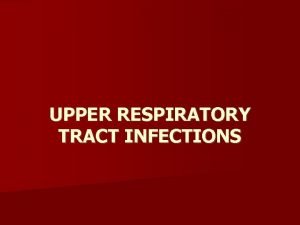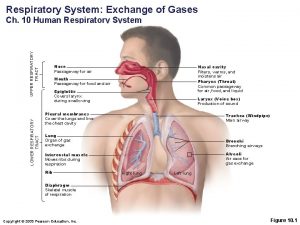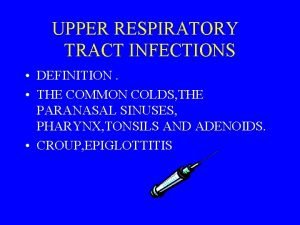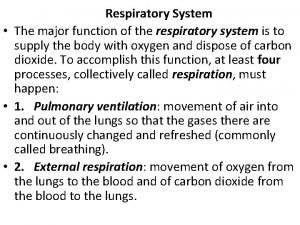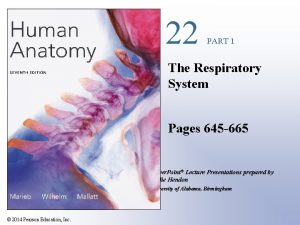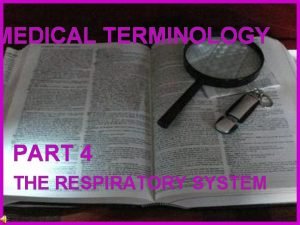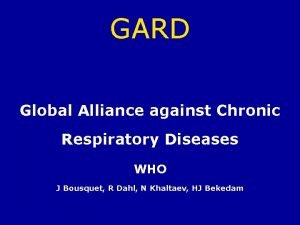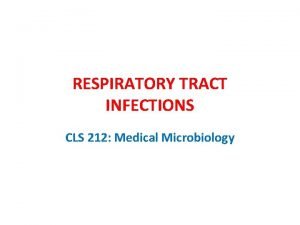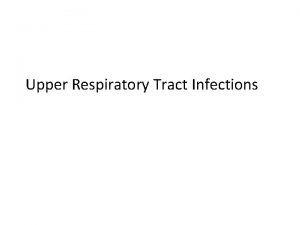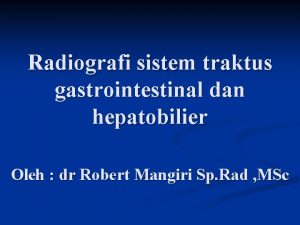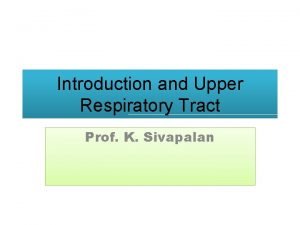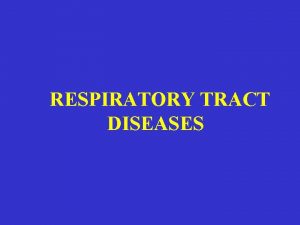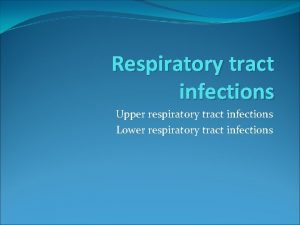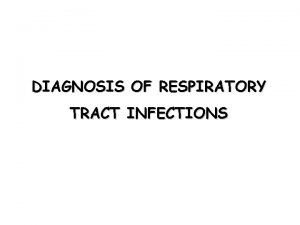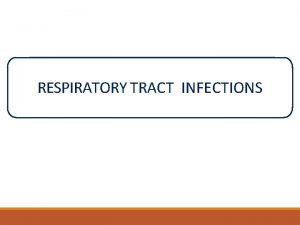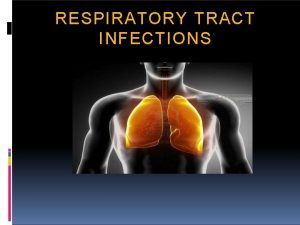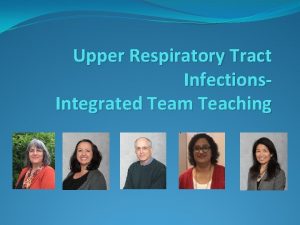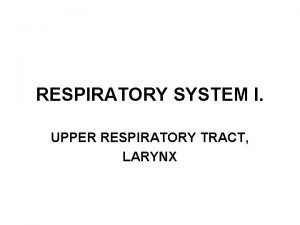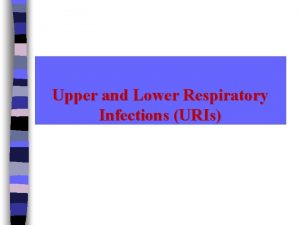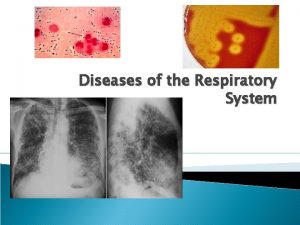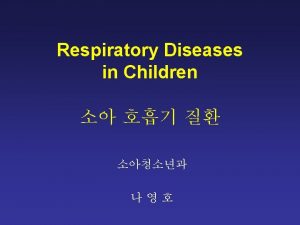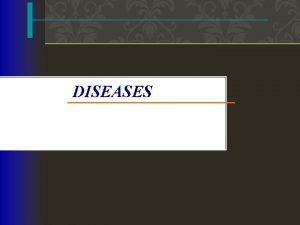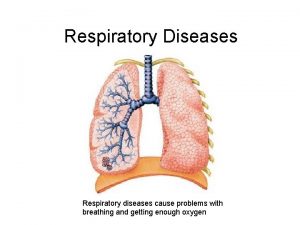Upper Respiratory Tract Diseases in Workplace Characteristics of


















- Slides: 18

Upper Respiratory Tract Diseases in Workplace

Characteristics of upper resp. tract § Nares to larynx § Tasks: § § § Air conditioning (T and humidity) Filtering (particles > 5 -20μm) Microbial defense § Mechanical § Chemical § Specific: Ig. A § Non-specific: lysozyme and lactoferrin § Sensation § Odor perception (olfactory nerve) § Irritant perception (trigeminal nerve) § phonation

Response mechanisms in upper airway § Allergic response § Mast cell degranulation § Rhinorrhea § Inflammation § congestion § Neurogenic reflex § Triggerd by irritants § Parasympathetic response § Axonal response

Occupational diseases § § § Allergic rhinnitis Irritant rhinnitis Non-allrgic rhinnitis Sinusitis Sensory alterations

Allergic rhinnitis § Frequency: 20% of general population § Types § Seasonal § Perrenial (more common in workplace) § Symptoms: § Rhinorrhea § Congestion § Sneezing § Itching § ± eye and chest symptoms

§ § § signs Pale and boggy nasal mucosa Sticky secretions

Occupational causes § Commonly-encountered allergens § Pollens in gardeners § Specific allergens § HMW compounds § § Animal antigens Plant antigens Insect antigens Latex § LMW compounds § TDI § Acid anhydrids § Colophony § Work-induced or work-aggravated

Attention Causes of allergic rhinitis are the same as asthma

§ Paraclinic § CBC § Eosinophilia § Increased serum Ig. E § Nasal smear § Eosinophilia § Skin prick test (gold standard) § Nasal peak flow measurement (acrossshift)



Treatment § Allergen avoidance § Engineering controls § Personal protective devices § Reassignment § Medical therapy: § Systemic antihistamines § Nasal steroids § Nasal Cromolyn sodium § Nasal ipratropium bromide (esp. vasomotor

Irritant rhinitis § Most common place of irritation § Causes § Combustion products § VOCs § Chromic acid § RUDS § Rhinitis after a sudden high exposure to irritants

Irr. rhinitis § Symptoms: nasal congestion, rhinorrhea § Signs: erythema and erosion in nasal mucosa § Paraclinic: no paraclinic test § DDx: allergic rhinnitis § Irritation rather than sneezing and itching § High prevalence among co-workers § Dramatic improvement when not exposed

§ Treatment: § Reduction of exposure § Saline nasal lavage § Topical streoid or ipratropium bromide

Non-allergic rhinitis § Vasomotor rhinitis § Augmented nasal reactivity to non-specific physical stimuli § Low humidity § Rapid changes of temperature § Excessive air motion § Gustatory rhinitis § Ingestion of spicy foods § Bright-light rhinitis

Occupational sinusitis § Seen in: § Spice workers § Vegetable picklers § Grain and flour workers § Most common: § Sinusitis after complication of rhinitis

Occupational laryngeal pathology § Hoarseness due to: § Overuse of voice § Chemical irritants § Laryngeal SCC due to: § § § Asbestos Smoking Ethanol Leather ant textile workers Gasoline and diesel oil § Laryngeal stricture due to: § Smoke inhalation injury § Vocal cord dusfunction § § Stridor, hoarseness, shortness of breath, globus Acute irritant exposures
 Pulmonary ventilation
Pulmonary ventilation Classification of upper respiratory tract infection
Classification of upper respiratory tract infection Upper and lower respiratory system
Upper and lower respiratory system Anatomy of the upper respiratory tract
Anatomy of the upper respiratory tract Steeple sign
Steeple sign Upper respiratory tract
Upper respiratory tract What is the major function of the respiratory system
What is the major function of the respiratory system Carina nasal
Carina nasal Pyramidal vs extrapyramidal tract
Pyramidal vs extrapyramidal tract Anterior spinothalamic tract
Anterior spinothalamic tract Diseases of the respiratory system
Diseases of the respiratory system Global alliance against chronic respiratory diseases
Global alliance against chronic respiratory diseases Passage of air through the respiratory tract
Passage of air through the respiratory tract Classification of pneumonia
Classification of pneumonia Lrti
Lrti Normal flora of respiratory tract
Normal flora of respiratory tract Upper gi tract
Upper gi tract Respiratory zone
Respiratory zone Broncheols
Broncheols

